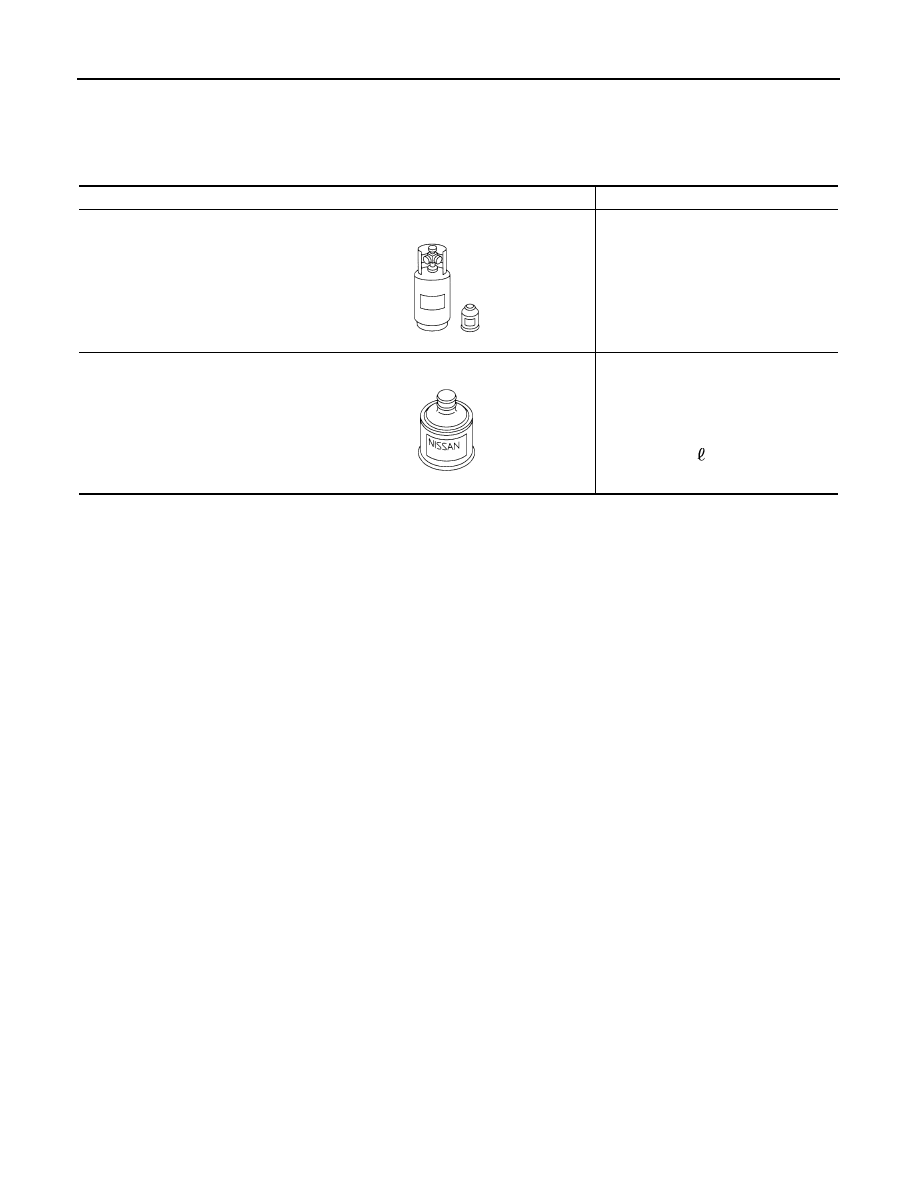Nissan Murano Z51 (2008 year). Manual - part 218

HA-24
< PREPARATION >
PREPARATION
• Refrigerant container fittings, service hose fittings and service equipment fittings (equipment that handles
refrigerant and/or lubricant) are different between CFC-12 (R-12) and HFC-134a (R-134a). This is to avoid
mixed use of the refrigerants/lubricant.
• Never use adapters that convert one size fitting to another. Refrigerant/lubricant contamination occurs and
compressor malfunction may result.
Tool name
Description
HFC-134a (R-134a) refrigerant
Container color: Light blue
Container marking: HFC-134a (R-
134a)
Fitting size: Thread size
• Large container 1/2
″
-16 ACME
NISSAN A/C System Oil Type S
(DH-PS)
Type: Polyalkylene glycol oil (PAG),
type S (DH-PS)
Application:
HFC-134a (R-134a) swash plate com-
pressors (Nissan only)
Capacity: 40 m
(1.4 US fl oz., 1.4
Imp fl oz.)
S-NT196
S-NT197
Revision: 2008 October
2009 Murano